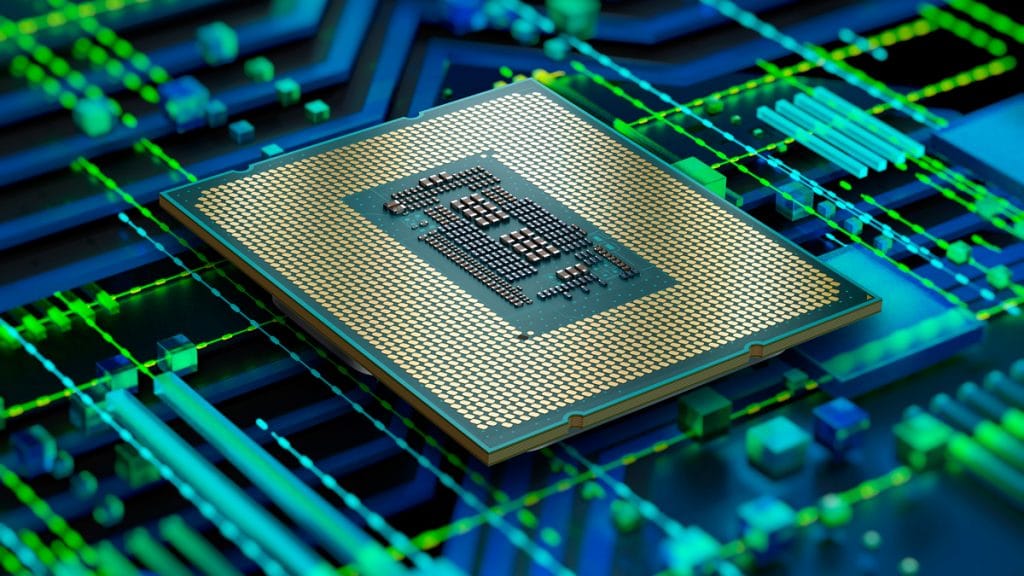Intel is set to release the “Raptor Lake” series of CPUs that will feature a new memory architecture which promises an up to 25% reduction in energy usage. The company hopes this will help with performance and battery life, making these chips more attractive for gamers.
Image credit: Intel
Thanks to a new innovation dubbed Digital Linear Voltage Regulator, Intel’s next generation of Core CPUs may be less power demanding than expected (DLVR). According to a patent filed this summer, DLVR may lower CPU voltage by 160 mV, resulting in a 20 to 25% reduction in CPU power usage. According to a roadmap previously released by VideoCardz, DLVR will be available with 13th Gen Intel Core “Raptor Lake” CPUs.

The abstract reads as follows:
A power supply architecture combines the advantages of traditional single-stage power delivery, when there are no additional power losses in the integrated VR, with low VID and CPU losses of FIVR (fully integrated voltage regulator) and D-LVR (fully integrated voltage regulator) and D-LVR (fully integrated voltage regulator) (digital linear voltage regulator). The D-LVR is connected to the main power flow in parallel rather than in series. The CPU VID and processor core power consumption are reduced by installing the digital-LVR in parallel with a main VR (e.g., motherboard VR). Because the motherboard VR standards may be loosened, the power supply design minimizes the guard band for input power supply level, lowering overall power consumption and saving money and power. The power supply design dramatically improves CPU performance at a cheap cost of silicon and little tuning complexity.
Like the current generation of Alder Lake CPUs, Intel’s Raptor Lake chips will use a combination of Performance and Efficiency cores. According to reports, some of the SKUs will include up to 16 Efficiency cores, as well as compatibility for faster next-generation memory such as DDR-5600.
The key concept behind Raptor Lake’s new power delivery architecture design is to use a digital linear voltage regulator (DLVR) as a voltage clamp in parallel with the primary VR, lowering CPU VID and lowering processor core power usage. pic.twitter.com/n7kwjwTY9C
— August 19, 2021, Underfox (@Underfox3)
FPO (through r/intel, VideoCardz) is the source.
Table of Contents
ToggleRecent Developments

Star Wars Eclipse Is Supposedly the Title of Quantic Dream’s Next Game
14 November 2021 14 November 2021

NVIDIA Releases a List of GeForce NOW Priority Members’ Capped Games
14 November 2021

What to Expect from the Game Awards in 2021, according to Geoff Keighley
14 November 2021 14 November 2021

It’s been 20 years since Metal Gear Solid 2: Sons of Liberty was released.
13 November 2021 13 November 2021

In a new video, Valve discusses Steam Deck’s “Aerith” SoC, as well as a global FPS limiter and an AMD FSR update.
13 November 2021

Intel’s plan to increase chip production in China is opposed by the White House.
13 November 2021 13 November 2021

Wayne is a unique blend of gamer and coder, a character as colorful and complex as the worlds he explores and the programs he crafts. With a sharp wit and a knack for unraveling the most tangled lines of code, he navigates the realms of pixels and Python with equal enthusiasm. His stories aren’t just about victories and bugs; they’re about the journey, the unexpected laughs, and the shared triumphs. Wayne’s approach to gaming and programming isn’t just a hobby, it’s a way of life that encourages curiosity, persistence, and, above all, finding joy in every keystroke and every quest.



